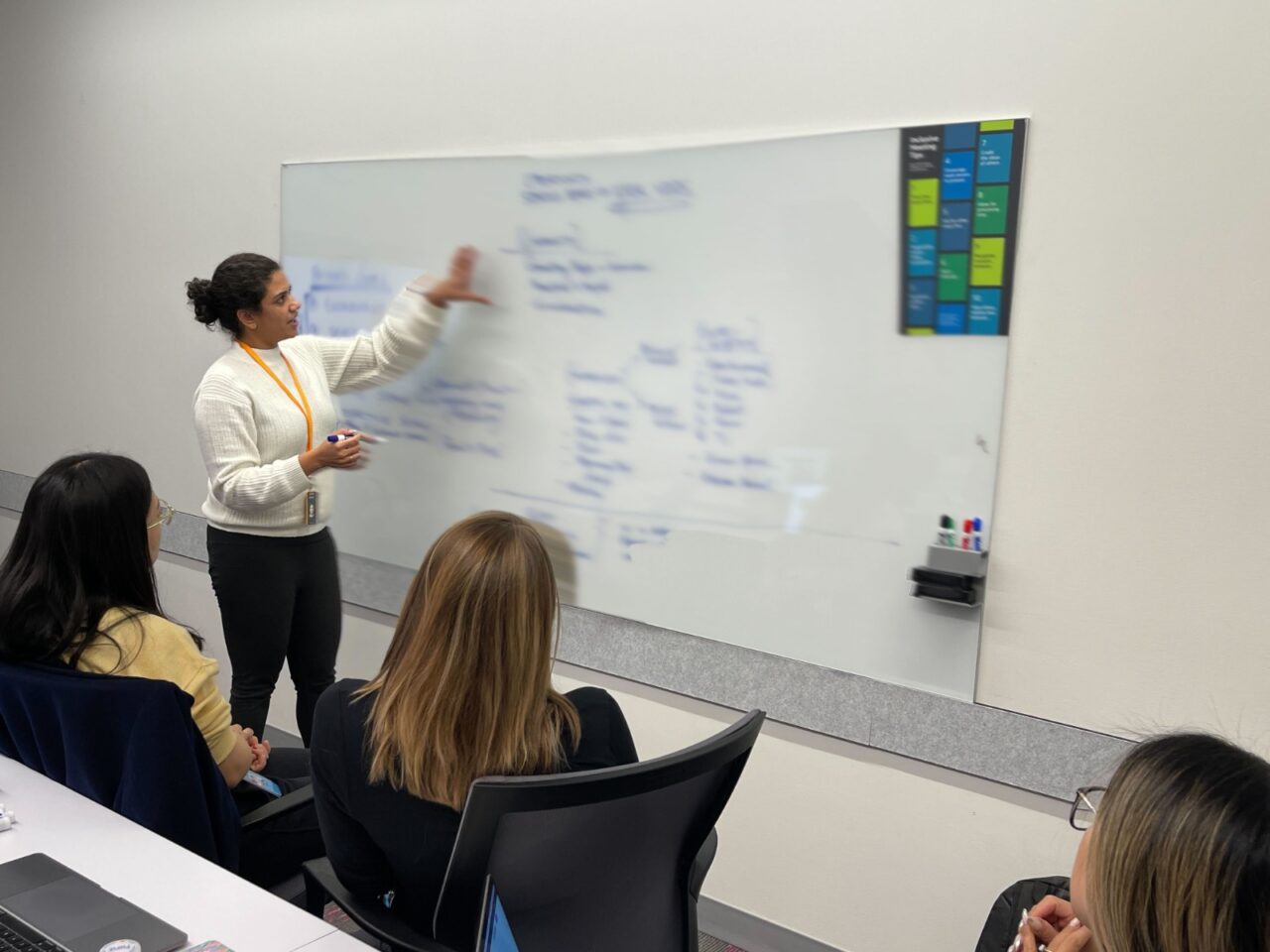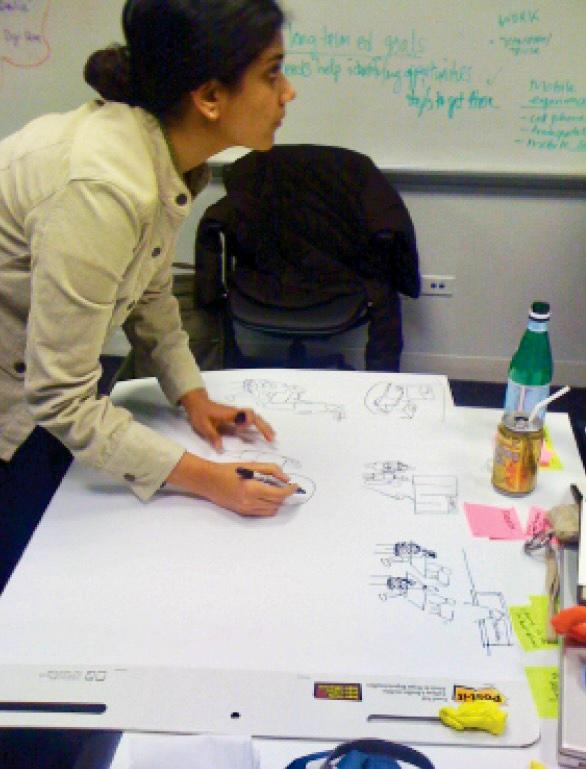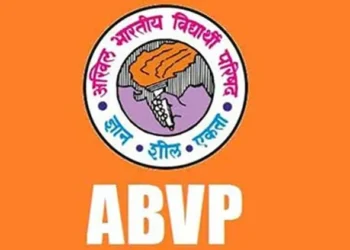Anytime you engage with an app or a product, you are encountering the skill of a designer, specifically a User Experience (UX) designer. Often unnoticed, these professionals ensure that the technology in your hands is effortlessly usable. This seamless interaction owes its thanks to UX Design, a discipline dedicated to eradicating barriers between users and technology. So what is UX design?
User Experience (UX) Design is relatively a new field for most of us. It is a multifaceted discipline focused on creating products, systems, or services that provide meaningful and relevant experiences to users. UX designers aim to enhance the usability, accessibility, and overall satisfaction of a product by considering the users’ needs, behaviours, and motivations. It’s a dynamic and evolving field that plays a crucial role in shaping the success of digital products and services across various industries.
I had the pleasure to interview Aparna Unnikrishnan, who is a respected figure in the field of UX Design and Strategy, boasting a career spanning 17 years. Currently, Aparna serves as the leader for Fire Tablets UX Design within Amazon’s Device Design and Services organization. Holding a Master’s degree in Design Strategy and Research, along with a Bachelor’s in Product/UX design, she has firmly established herself as a prominent leader in shaping user experiences for technology-enabled devices.
In her current role at Amazon, she leads a team of designers, driving the vision and evolution of Amazon devices. With a track record of involvement in the development and launch of over 15 Alexa-enabled products, her contributions underscore her commitment to enhancing user experiences and driving adoption of advanced technologies.
The following interview is based on discussion with her, and we follow her journey where she started from our very own Thrissur, Kerala and made her way to Silicon Valley. We go deep to understand her motivations and aspirations and what led this small town girl to dream big.
Beena Rani: How did you come to know about design? How did you get interested in the field of design?
Aparna Unnikrishnan: My story is one of following my heart’s creative yearnings and embracing the unexpected twists and turns that ultimately shaped my professional destiny. From a young age, I was drawn to the allure of creativity. Whether it was through painting, crafting with household odds and ends, or arranging flowers, I found solace and inspiration in the act of transforming any material I could find into something beautiful. My school was also one of a kind that inspired a lot of extra -curricular activities along with education. I am very thankful to all my teachers and the principal Mrs. Nalini Chandran for setting up a school that helped identify these qualities in a child. In school this creativity was consistently showcased through participation in drawing, painting, flower arrangement, vegetable carving, pookalam, dance, poetry writing, and recitation competition.
Seeing that I consistently won these competitions also gave me the self confidence that I had something special in me when it came to creativity. My mom played a big role within these, she was often my sounding board, I often practised with her and she added to my ideas and guided me related to aesthetics with her design sensibilities, she being a designer herself.
From school I started getting into state level and national level competitions; going into these competitions I had the opportunity to observe others more, understand how other kids around me showed their talent and I was always inspired to do something different. I think this need to think something different was fueled by all the reading I had done in my childhood. The reading and world I saw through this reading always gave me fresh perspectives.

Having grown up in a nuclear family set-up those days where there were no devices and screens to distract you, my primary activity was reading. I read a lot and I read all kinds of authors ranging from the classics such as Dickens, Bronte sisters, Jane Austin, Tolstoy to Tolkein to Rowling. I also read a lot of international authors such as Gabriel Garcia Marquez, Murakami, Ha Jin, Pamuk etc. This activity was certainly inspired by my father who was an avid reader himself and his conversations about these authors inspired me to read them as well.
With all this I always knew I had to choose a path that had some creative aspect to it. Since being an engineer or a doctor was perceived as the most successful professions in Kerala at that time, I decided to pick the next best adjacent area – Architecture. I felt Architecture would satisfy the needs to have a “profession” and at the same time the creative side of it would fuel my passion. Little did I know there was a profession such as design existed back then.
I came to know about NID through my mom, who one day had a newspaper cutout in her hand, which called for admissions at the National Institute of Design. She had heard of NID since she had studied in Baroda, Gujarat and had done Textile design in her days. NID was quite famous those days as well. Further, when my parents’ friends who had gone to IIT and IIM hailed it as an amazing school, we as a family started to give it more thought. Even then I had no idea how famous or well established NID was.
Regardless, I went to Cochin one day and gave the entrance exam. What I remember vividly about the exam was that it was the only exam I wrote in my life where I had fun! The entrance exam itself was a revelation. Unlike conventional tests with predetermined answers, the NID exam celebrated creativity and originality. After writing the exam, I remember realising this might be something special. Also little i did know I was going to pass that admission.
BR: Did someone or some factor inspired you, what were those factors?
AU: There wasn’t one specific person who inspired me, but at the same time, I know that if I hadn’t been raised in the community I was brought up in, surrounded by my parents and my school, I wouldn’t have been able to succeed at NID. This is mainly because NID looks a lot for originality, individuality, a spark in a student that would hopefully take them forward to do special things. And these were the values and principles my parents and school instilled in me.
I was always pushed to explore more, I am even thankful to my neighbours and dear friend in my neighbourhood with whom I spent months together writing books and painting. Now looking back I see it as something special. Having a strong community in the form of teachers, neighbours, parents and friends who see what’s special in you and who are constantly instilling you to achieve more and aim for higher things, slowly seemed to have impacted the way I think and what I aimed for in life.
BR: Getting into NID is still tough, how did you get into NID,without any prior training?
AU: I had no clue getting into NID was hard. I think in some ways not knowing how special and amazing the institute was shielded me from unnecessary thoughts and pressures. I do remember meeting a super senior who had passed out of NID years back and he had just clear advice for me at that time; “Be Yourself” he said. And that’s exactly what I did. So there were three rounds of exams before you qualified for NID. First one was a three hour long design aptitude test, second a day long workshop, making things, conceptualising designs, 3D modelling and experimenting with materials and a final interview with a panel of NID faculty.
The first two rounds were just pure fun! This was exactly what I had been doing growing up and throughout my childhood. So making, drawing, doodling, conceptualising, building and coming up with ideas didn’t feel alien and it was second nature. For each of those exams I had a blast and couldn’t believe that this was actually an exam because of how much fun I was having.

Now by the third round, the gravity of the situation was slowly sinking in. Seeing the vast, beautiful campus where peacocks constantly danced on the sprawling lawns; observing the beautiful corridors and spectacular architecture designed by Gautam and Gita Sarabhai, inspired by the “Bauhaus” Design Movement, definitely impressed upon me the reality of how prestigious an institution this was.
To my surprise the interview was an amazing experience as well, as the faculty and I got into deep discussions of the books I had read, why I had read them and what about it inspired me. Again, there was a warmth about them and I was reminded of discussions with my father.
BR: How did the education at NID inform and sculpt your future?
AU: What NID does most importantly is give you the space to discover who you truly are. In the early 2000s, when I joined NID, it only recruited 60 students across all of India for its undergraduate batch, but these were the most interesting 60 minds they brought in from across India. At NID, one is exposed to a broad range of creative minds, each practising different specialisations within design, but underneath holding shared values and principles about design.
NID transformed me into a design-aware, social conscious individual who fosters innovation and invention, aimed at solving problems, staging experiences and speculating futures, in service of individual and collective well being. The core of this education is creative problem solving, and it follows a simple process of researching and understanding who you are solving for, why you are solving it and the need for it.
Then it equipped you with all the tools and skills to come up with the solution and ensured that the solutions were simple and integrated to the socio-cultural needs of the society. It is a learning model that puts theory and practise together, where one learns the methods and techniques through its application in the form of projects.
Over a span of four years, I have worked on so many big and small projects, it instilled a confidence on applying the same approach on any product category one takes on. These foundational learnings are still the underlying method of thinking in every design challenge I come across. NID also gave me my first international exposure, as I was chosen to represent NID for an exchange program in Pforzheim Germany. At this institute in Germany (Hochschule fur Gestaltung) I was further exposed to design management and experienced a new culture of design and innovation.
BR: After NID, how was your work experience?
AU: I joined LG Electronics during the last semester of my NID program. This 6-month internship was a prerequisite for graduation. During this time, I worked on LG’s Chocolate phone, which generated significant buzz. Throughout the internship, I gained experience in aligning business needs with customer requirements to develop solutions and in designing for scalability for a specific customer base.
Following this internship, I seized the opportunity to join Whirlpool Corporation, where I focused on designing refrigerators and washing machines. In this role, I rapidly advanced and successfully launched India’s first bottom-mount refrigerator and introduced a new category of home inverters called Elantra in 2007.

In those early days, my primary goal was to accumulate as much experience as possible, leading me to take on multiple roles within the design team. These roles included researcher, designer, and prototyper, and collaborating with marketing and engineering teams provided valuable insights into the business and developmental aspects of product programs.
Wearing these various hats strengthened my skills as a designer, enabling me to view products from diverse perspectives.
BR: After NID, what was the picture like? What career prospects (even comp wise) and job perceptions existed for a designer at that time?
AU: I don’t recall thinking much about the broader concepts of career or money while I was studying. The priority was always to build a strong portfolio because that’s what secured jobs. So, while at NID, it was crucial to choose the right programs and work diligently to ensure robust design solutions. Upon leaving NID, we were fortunate to have many seniors who provided insight into the life of a professional designer, which gave us reassurance. After graduation I realised there were not enough designers to address the market demand at that time. I distinctly remember being pleasantly surprised by the lucrative first salary I received at Whirlpool when I began working as a designer.
BR: Why did you select the US for the future of your career? Anyone inspire you?
While working in India, having delivered various projects and launched products, I felt the need to expand my thinking further. Something seemed amiss in the design projects I undertook. Often, designers were solely valued for their expertise in aesthetic sensibilities, without being included in larger product strategy discussions. Their opinions were confined to matters of aesthetics, rendering design a subjective realm. Design became elusive to qualify and quantify, sparking my desire to master it. I yearned to understand how design could effectively serve as a strategic tool to influence and impact organizational needs.
During this period, a professor from IIT Institute of Design, Chicago, visited Whirlpool, New Delhi, to deliver a talk on the institute and its curriculum. It felt like a perfect fit as I discovered methodologies and processes that addressed the very questions lingering in my mind. The curriculum emphasized design thinking methodologies, delving deep into the essence of consumer and business needs—answering the why, what, and how effectively.
BR: How was your first job after doing Master’s at IIT? – How was SC Johnson Experience?
AU: After my Master’s at IIT, I joined SC Johnson. SC Johnson & Sons is a multinational company primarily known for manufacturing household supplies and fast moving consumer goods. They produce a wide range of products including popular brands like Windex, Pledge, Glade, Raid, OFF!, and Ziploc.
The role within this company was invigorating for a designer since the scope of the role was to use design as a critical strategic tool to build a brand platform with multiple product categories for the company. Unlike designing for a single product, this required a higher level of design understanding and expertise where business model (how the company is selling their products), brand perception (how do customers perceive its products), customer experience touchpoints (where do we elevate their usage experience), and implementation strategies (how we deliver the new product solutions) need to be incorporated through design.
This meant closely partnering with the researchers, marketing, engineering team and operations to come up with new categories of products. I was specifically focused in the area of Home Care & Air Fragrancing and had the opportunity to launch multiple categories for the Glade brand, establishing their Automatics dispensing category and Wax melts range of products. One of the key highlights during my SC Johnson experience was also the launch of Glade’s, Museum of Feelings, a temporary pop-up exhibit created by the air freshener brand Glade in collaboration with artists and designers. It aimed to evoke emotions through immersive sensory experiences related to different scents and gained a lot of popularity.
BR: Now, with AI, is design or creative field getting affected-is it truly getting redundant? What is your perspective?
AU: In my opinion, AI is not replacing design; rather, it has opened new chapters for design professionals. AI is essentially a technology that can be applied across various applications. It is not even a completely new entity, as it already exists in common applications we use daily. For instance, when Google Maps suggests a quicker route to reach your destination, it’s utilising AI. Similarly, when you receive new movie and music recommendations based on your listening or viewing history, it’s employing the same technology.

Like many professions, AI will assist and, to a certain degree, replace certain recurring design tasks through automation. However, that is just one aspect of design. Questions such as which problems we are solving through design, what key factors should be considered while solving those problems, how we narrow down to the right solution, and what the design strategy is for implementing the solution, still need to be addressed. We are not seeing AI being able to address these critical design processes in their entirety; it still requires human intervention.
On the other hand, the role of design has become even more critical with the advent of AI. As AI evolves, it needs to be designed for better adoption so that customers can use it easily and efficiently. Designers today are contemplating and discussing responsible AI, how to bring transparency and build customer trust for AI-enabled platforms, and how to design mitigations for AI-related errors, among other topics. Design is solving complex problems that have broader scope and impact, especially with AI becoming more mainstream.
BR: Can AI, fully replace humans?
AU: Not yet! I think we have currently not reached the point of creating true sentients that can think, feel, or comprehend, in a physical, mental, and emotional manner all encompassed as a single entity. AI has the potential to automate various tasks and processes, but it cannot fully replicate human capabilities such as creativity, empathy, and moral reasoning. While AI excels in certain domains, it often struggles with complex decision-making and understanding nuanced situations.

Human oversight and intervention are necessary to mitigate biases and errors in AI systems. Ultimately, AI should be viewed as a tool to enhance human capabilities rather than as a complete replacement for humans. Collaboration between humans and AI can leverage the strengths of both, leading to more efficient and effective outcomes.













Comments